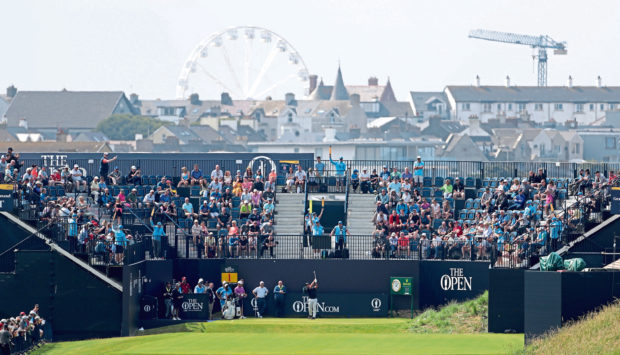As the whole world knows, the Open Championship returns to Royal Portrush this week after a gap of more than 60 years.
There is no question – never has been really – that the Dunluce Course on Northern Ireland’s north west coast is worthy of hosting the oldest and most prestigious golf championship in the world. It’s a heroic, traditional links, and even the addition of two new holes towards the turn has been done so sensitively that you can’t see the join.
The unloved old 17th and 18th holes have gone, now the ground for the tented village. Portrush has been in a frenzy of excitement for five years since it was announced the great championship was coming back.
This will be an emotional week, not just for the locals. I lived in Portrush for a while, and it was a very different place back then.
It was the early eighties, possibly the most fraught time of “The Troubles”, during the hunger strikes in prisons across the province. I was a 17-year-old with a warped sense of adventure and had – somehow – chosen Northern Ireland for university.
The conflict didn’t directly manifest itself in Portrush, then as now a small coastal town of around 8000 inhabitants. But the tension was palpable everywhere in the province at that time, as was the overriding effect of the Troubles on everyday life.
To be blunt, Portrush was a grim place in those days, sort of a mini-Blackpool of Northern Ireland but without any of the charm. Blackpool charming? You get how grim it was.
Northern Ireland was mostly like this in the early 1980s. In Belfast and (London) Derry, walls and fences and stop searches and armed soldiers were so prevalent that after a while, even for a naive Dundee boy, they became normal.
Graffiti – from vast wall murals to racist sectarian scrawls – covered just about every available space. Railway stations in use even in towns seemed abandoned or derelict. There was a sense of irrevocable decay about the place.
The people were warm and hugely welcoming to me, from both communities. But they also seemed worn down by their apparently unsolvable disputes, and I could never comprehend the hatred they had for each other.
More than 30 years on, I’m not as naive to believe that all these intractable disputes have been solved. But going back to Northern Ireland and Portrush for golf, as I have been a few times before this week, has been a revelation.
Golf hardly featured on my previous experience. Yet returning to cover an event in 1995 to the most recent, the Amateur Championship in 2014, Portrush has changed beyond recognition.
It’s still not Antibes, of course, but it’s a lighter, happier place – somewhere you’d actually want to go to for pleasure. In fact the optimism you now feel in the province is in complete, diametric contrast to the atmosphere of 1981 and 1982.
Rather than what became the normality to me in those days, there now is a real normality about life there.
In the early 1980s having the Open back at Portrush for the first time since 1951 was a laughable fantasy, especially as the championship is staged each year during the marching season, a major flashpoint of the sectarian divide.
But now, the return of the Open seems almost overdue. I particularly recall attending the press conference hosted by the R&A in the Royal Portrush clubhouse in 2014 to announce the return (although not this date at that time).
Peter Robinson, then first minister of the power-sharing NI assembly, sat at the same table with Arlene Foster, the last FM to date, both of them from the Democratic Unionist Party.
But also sat there was the late Martin McGuinness of Sinn Fein, then the deputy first minister.
These were precisely the sort of people who I’d previously thought could never settle their differences, and here they were, enthusiastic and even excited that the Open was coming back, having successfully moved all the many obstacles in the way of it happening.
And they had done it together.
There are many, many issues remaining in the province. But none are unsolvable, and it’s fantastic to know that the Open this week and golf in the future can play an enormous part in the continuing renewal of this beautiful little country and its people.
That’s more than enough to make even this brief former resident a little emotional.
Holding on to that week
T2G addressed the issues facing the Scottish Open last week, and Aberdeen Standard Investments chairman Martin Gilbert answered a number on Sunday.
Specifically, holding on to the pre-Open week on the schedule, where the Scottish has been for 34 years.
Others are circling as the current deal for the Scottish runs out next year.
But both ASI and VisitScotland re-iterated on Sunday that they were in this for the long run.
“It’s up to us to make sure we don’t lose it,” said Gilbert. “For us it’s the most important date on the calendar.
“After 34 years, we certainly don’t want to be remembered as the people who lost that date.”
Good to hear.
